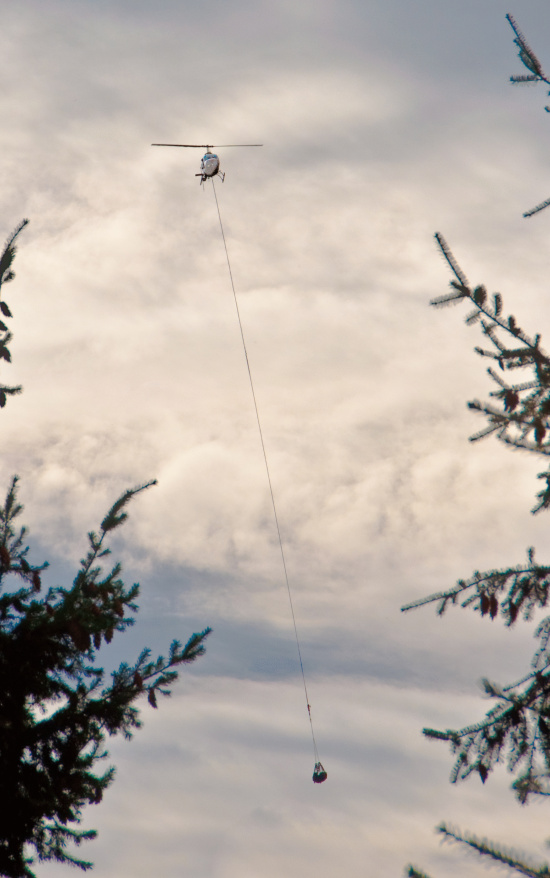
Helicopter hauls trash from a marijuana grow in the Six Rivers National Forest near the eastern Humboldt County border. (All photos unless otherwise noted are by Kym Kemp)
Part two of a series of articles about how marijuana grows affect the environment: This post addresses the cleanup. In particular, who dealt with the mess and why it was believed necessary to remove it. (See Part 1 of this series for photos and description of the Bear Creek grow)
In the early hours of November 6th, a group of volunteers and National Guard trudged along old skid roads and trails deep into the Bear Creek drainage just inside the eastern border of Humboldt County. Cleaning up trash and infrastructure from a marijuana garden busted in August of this year was their mission. They joined a handful of scientists and a scattering of reporters who arrived early to learn about the realities of an illegal grow.
The goal that day was in many ways to “discourage, dismantle, and deter.” First Lt. Kara Siepmann of the National Guard explained, “What we see year after year is growers returning to the scene. Our goal is to tear up the infrastructure.”
This particular marijuana garden had first been brought to law enforcement’s notice in 2007. Then over 130,000 plants were removed making it the largest marijuana bust in Humboldt County. This year, it was noticed and raided again. But careful examination of Google Earth’s satellite photos show that it was also in place in 2012.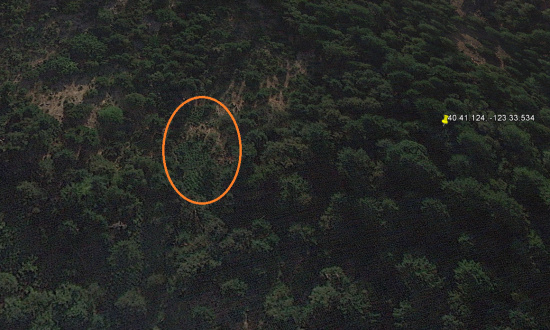
A 2012 Google Earth photo shows the regular lines of man-made terracing created for marijuana plants. The pin shows the coordinates of the campsite, 40 41.124 123 33.534.
Dismantling the multiple small dams and reservoirs at this garden and removing miles of plastic pipes might discourage the original trespass growers from returning and deter other trespass growers from stepping in to take their place. 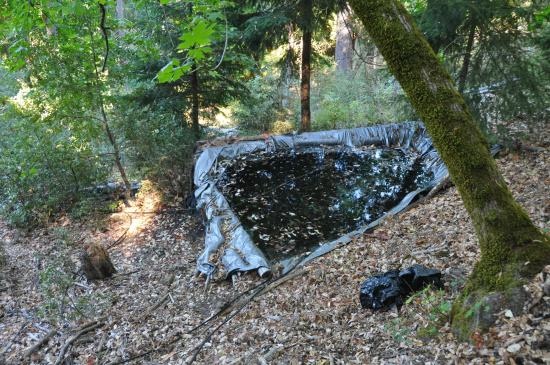
One of the five reservoirs associated with the Bear Creek Grow. The largest was capable of holding up to 2500 gallons. There were also 12 dams able to hold between 500 and 1000 gallons of water. Water diverted into these holding areas depleted streams already ravaged by this year’s drought. No one knows how this affected fish and other aquatic life. (Photo provided by Mourad Gabriel)
So, multiple agencies-the US Forest Service, the Dept. of Fish and Wildlife, the National Guard—teamed together with volunteers to sanitize the Bear Creek site after the depredations of trespass growers. The non-agency folk were mainly gathered under the umbrella of the High Sierra Volunteer Trail Crew—an organization who had recently lost its executive director when he plunged to his death from a helicopter as he was being transported to a grow site to assist in reclamation.
His death highlighted the sacrifices that these individuals make every time they assist at one of the cleanups. “We couldn’t do it without them,” explained Daryl Rush, Asst. Special Agent in Charge with the Forest Service.
Many of the volunteers were well-known in the Humboldt area. Ryan Burns of the North Coast Journal
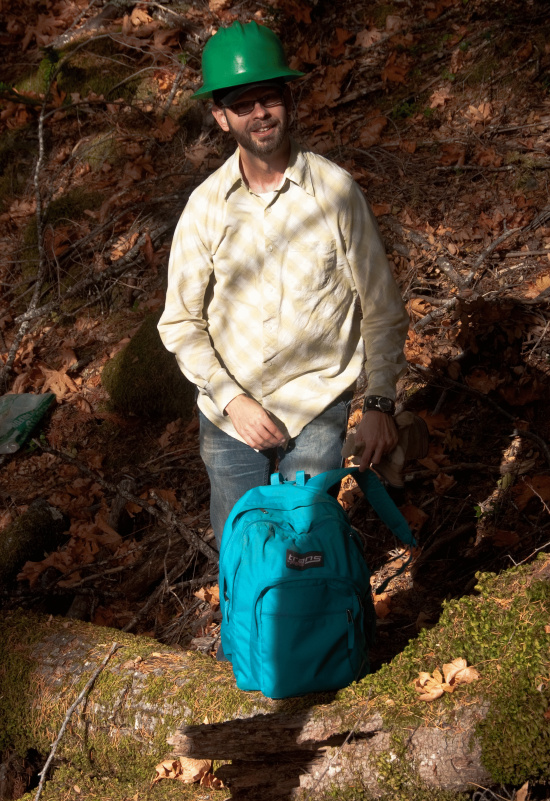 and Kristin Nevedal, the Executive Director of the Emerald Growers Association.
and Kristin Nevedal, the Executive Director of the Emerald Growers Association. 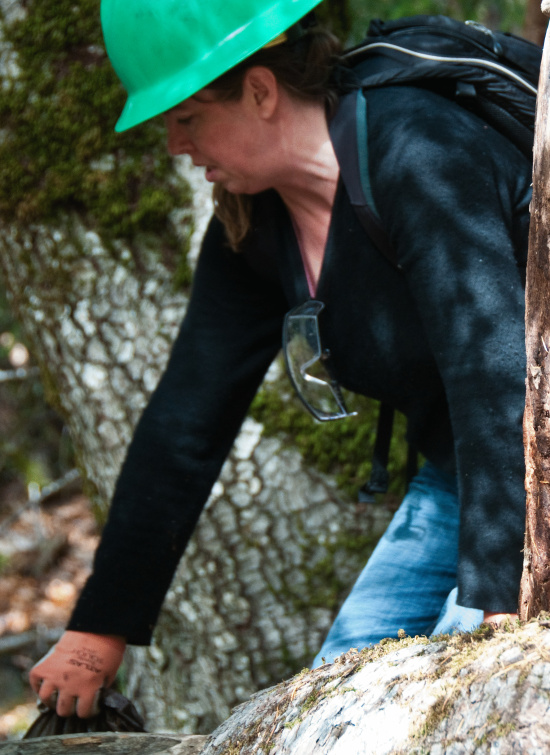
Like characters in a movie set to fast forward, crew members began swarming around the hillside almost as soon as they arrived, dismantling and packing everything in sight. So quickly it was almost comical trash, disappeared from far-flung areas of the forest and was packed into tarps which would be hauled out by a helicopter.
“Grow Big” and “Grow More” urge the labels of products gathered from the Bear Creek site. These trespass growers apparently took this to heart and produced a growing pile of trash. In all, over 8000 pounds of water pipe, tarps, and just plain garbage were dragged uphill and bundled for transport.
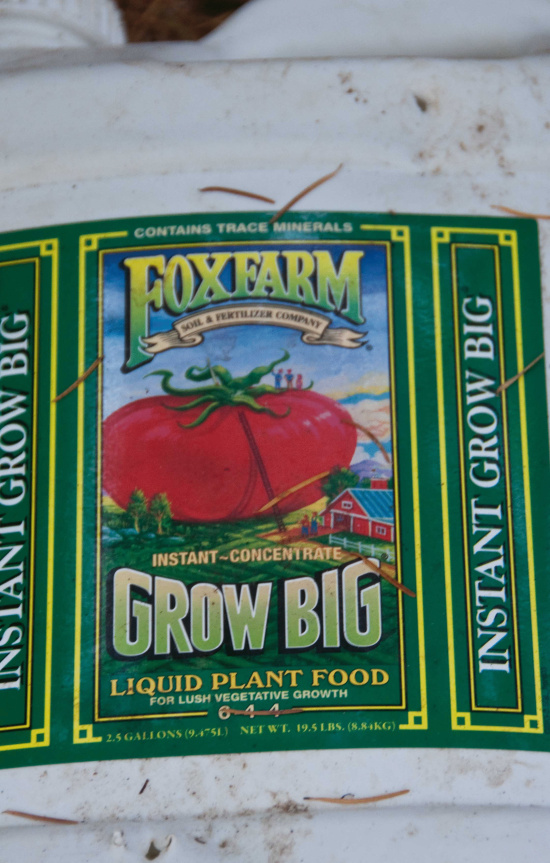

As they bagged the trash, scientists, Mourad Gabriel

and his pregnant wife Greta Wengert (see below), as well as others, counted up the amount of fertilizers that had been held within the empty bags and other containers. Receptacles for over 4000 pounds of soluble fertilizers were found at the Bear Creek site. Excess fertilizers which seep into waterways can cause algae blooms which kill aquatic life.
In their haste to turn a private profit off of public lands, these kind of trespass growers often rely on the worst types of agricultural practices, explained Gabriel, president and wildlife ecologist at Integral Ecology Research Center, as he stood inside the swarm of cleaning crew. His wife passed hauling a partially full orange trash bag. He turnd to worriedly warn her not to touch any of the toxicant containers.
Smiling slightly, she reminded him that she was only picking up paper trash. Later, she explained there was more than toxic containers she needs to be cautious about.
“I can’t pack all the water me and my child need,” Wengert said quietly. On these long hikes her job requires, she must drink from water within the wilderness using a filter. “I’m at a slightly higher risk.” The man-made chemical mix seeping from some grow reservoirs worries her. Now that she is pregnant, she says, “I think about with a lot more concern the risk to not just me but my child.”
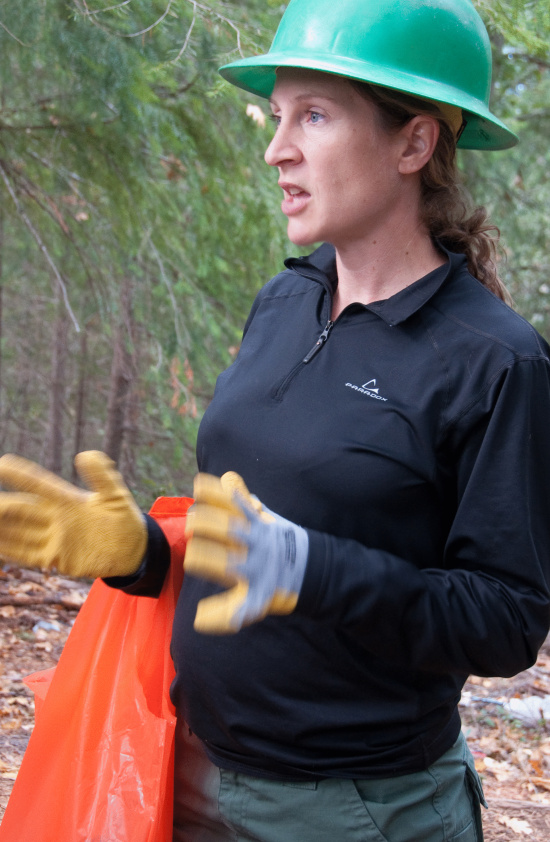
Greta Wengert, senior ecologist at Integral Ecology Research Center, explains that human made trails may act as a conduit for predators (such as mountain lions and bob cats) usually found at the edge of forests and lead the creatures deep into wooded areas. This may cause problems for small prey animals unused to dealing with them.
Wengert and her husband, Gabriel, know that several toxicants found at the Bear Creek grow can be very harmful. Among the items left behind are two anti coagulant rodenticides, brodifacoum and bromadiolone. A recent study, of which Gabriel was a lead author, have shown that many fishers, a rare species of mammal similar to a weasel, are dying from exposure to these types of products. Gabriel says that according to recent studies he hasn’t yet published, “86% of fishers on public and tribal lands are exposed to these toxicants.”
He pointed out,
There are two populations of fishers in California. There is a very isolated small population in the south Sierras and there is the northern California population. For the northern California population, the population size is unknown. The south Sierra population is estimated to be no more than 120 adults and no more than 250 total… fishers.
Between 2007 and 2011, he explained, four of the dwindling population of fishers died because of
anticoagulant rodenticides. “Since 2011,” he adds, “we have had 3 more deaths due to toxicants, therefore bringing the total up to seven for California.”
The ecologist has been studying fishers for nine years “looking at causes of mortality…It used to be that there were one to two different types of anticoagulants and rodenticides in one fisher…Now we have up to five,” he explains.
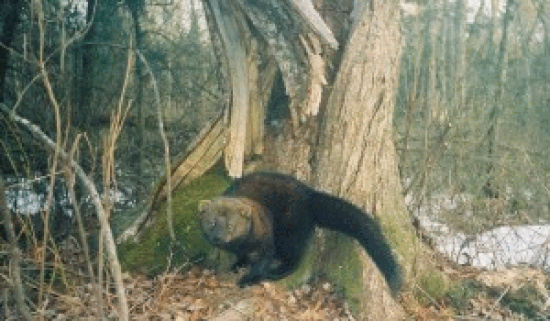
Adult fisher (Photo found here)
Aluminum phosphide, another toxicant found at the site, is restricted to use by a certified applier and can be lethal to humans as well as wildlife. When exposed to air, it can begin to react with moisture and form phosphine gas which can be extremely toxic.
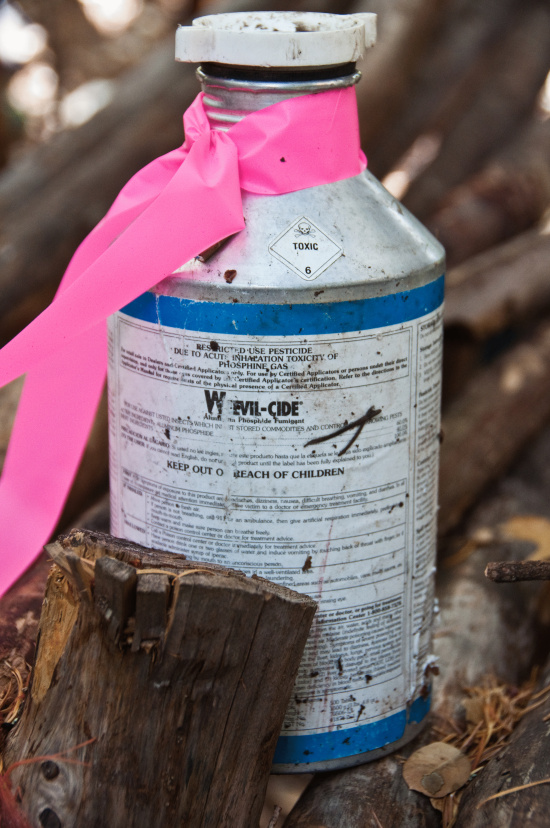
Handling the container which may have been exposed to moisture from the elements requires a respirator, explained John Heil, Press Officer for the US Forest Service.

The canister is carefully wrapped in an orange bag and sealed with tape color coded to indicate danger, before being placed in a bucket for extra protection against accidental harm.
As the sky grew dimmer, the last bits of garbage were hoisted away. The volunteers, reporters, guardsmen, and agency folk faced the long twisted path back to the cars. Behind them, the hills are swept clear of trash. Trenches in the hillside and the massacred trunks of scattered trees are the major reminder of what had been a trash heap. New forest fauna
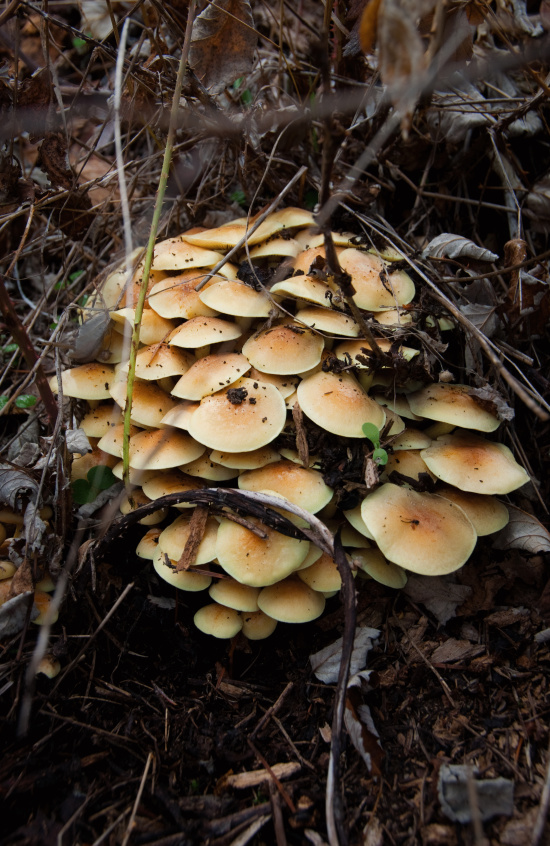
mingles with acres of sturdy trees as the months turn towards the next growing season. Will growers return again to the site. If not next year, in five or ten?
If trespass growers return to these public lands, how many fragile species will survive the next onslaught of water diversions, algae blooms, and toxicants?
Look for part three coming soon.
CLICK TO MANAGE